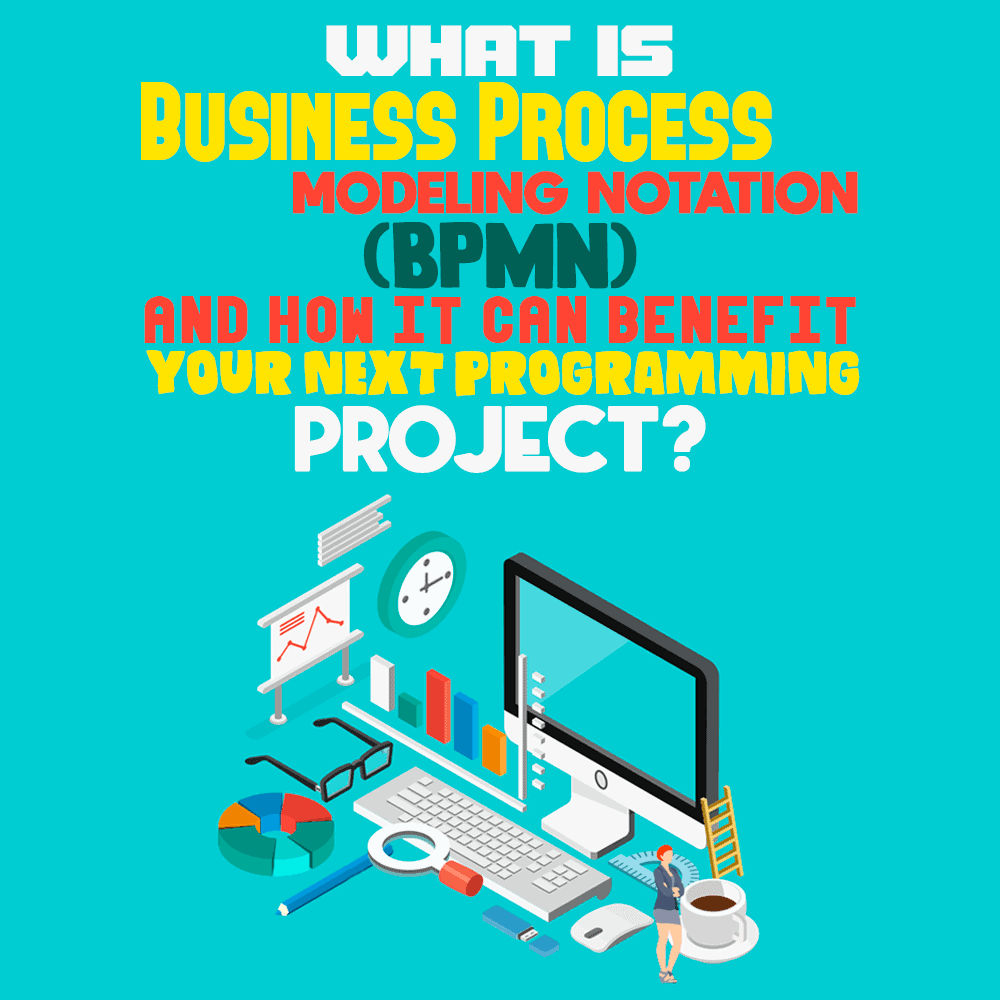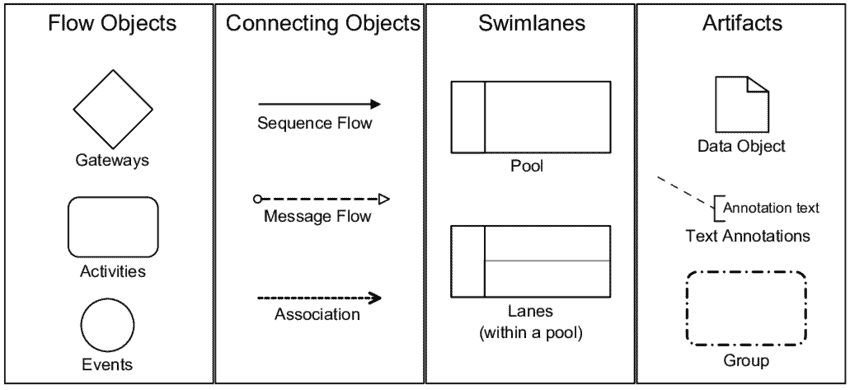
BPMN is a standard processing model that offers a graphical representation of business or software requirements in a Business Process Diagram (BPD). Simply put, it is a model that is designed for the ease of understanding the entire process of product development.
BPMN aims to support business process management for both business and technical users. It provides a notation that can be easily grasped by business analysts, yet represent complex syntax.
Understanding BPMN is the first step in learning how to share details with everyone involved in a project in a clear, productive manner.
An Overview on Process Modeling Notation and BPMN
There are two points of view in understanding process modeling notation: theoretical and operational. From a theoretical point of view, a process modeling notation refers to describing the main elements required to explain the entire development process. This way, we can understand what, when, and why something is occurring.
On the other hand, the operational point of view is focused on guiding application developers and method engineers. Some of the technologies that allow the business process models to become completely executable include model-driven architecture, Unified Modeling Language, and service-oriented architecture.
Process modeling notation is a language that humans can read and use to describe the structure of a business process. But when it comes to choosing the modeling notation that works for your business, experts suggest opting for the standard that matches your needs and is backed by a wide range of tools with training or references.
Business Process Modeling Notation is an open-source standardized graphical notation that can be used by anyone. Its original code is available for anyone who wants to modify and use it.
BPMN usually begins and ends with the business process flow diagram. If used by the programmer or organization, it becomes a technical map outlining the flows and practices that are available in a standardized language, and the users can easily improve, follow, and share the model.
Ultimately, BPMN is a bit like using flowcharts or presentation slides, only much more flexible and standardized, offering a language that both technical and nontechnical people can understand. This minimizes misunderstandings and promotes communication.
The Purpose of BPMN and How To Benefit From It
From a theoretical point of view, BPMN is meant for stakeholders and participants who need to understand through a visual representation the steps required to complete a process. Conversely, from an operational point of view, BPMN is meant for those who are going to perform the process and who need a detailed explanation for precise implementation.
BPMN’s main purpose is to become the notation that every user can understand. Apart from that, it aims to do the following:
- Ensure completion of the model without the need for additional documentation
- Offer a consistent structure
- Remain highly readable at all times
- Be shareable with IT as an executable process
Whether you are a business analyst, manager, technical developer, programmer, or consultant, BPMN is a standard language for ease of understanding. It removes the gap between process intention and implementation by providing clarity and detail about the business activities.
Diagrams are easier to understand than text. They enable easier conversation and collaboration for efficient processes and high-quality results. With BPMN, you can communicate with XML documents for process execution.
A few benefits that can be achieved with BPMN include:
- Control checkpoints that show the array of activity implementation and data exchange
- Shows which information system backs the process
- A complete understanding of how the process is being regulated
- Any exchanged information during the implementation of the process will be visible
When To Use BPMN
Users of BPMN call it simple, complex, precluded, and helpful at the same time. Nonetheless, there are occasions when you would want to use the BPMN method and style as your standardized language. The three most important ones are:
- If you are stuck with a bunch of commonly used workflow diagram elements to convey your concept, then BPMN can help in selectively drawing the entire process.
- If you want to show that you are an expert in business process management, nothing can beat modeling languages. When applying for a position that requires business process model expertise, knowledge of BPMN will set you apart.
- If your organization or client wants to create the ideal process of software development.
Originally, BPMN was a modeling notation for providing a standardized diagram language to all stakeholders. However, with the release of its second version, it is now offering an XML schema that maps between software tools.
BPMN 2.0 Diagram Symbols and Elements
Just like flowcharts, Business Process Modeling Notation diagrams consist of a set of symbols where each shape has its certain meaning and role. With the help of these symbols, one can create easy-to-understand business flowcharts and share them across the development team and organization.
BPMN majorly consists of four elements:
- Flow objects: These are used to define the business process.
- Gateways
- Events
- Activities
- Connecting objects: These arrows show the connections between flow objects.
- Sequence flow
- Message flow
- Association
- Swimlanes: Each lane represents where the process responsibility resides, while the pool shows the participants.
- Pool or lane
- Artifacts: These give additional information about the process.
- Annotation
- Group
Having a consistent look and feel in the diagrams keeps elements in BPM to a minimum. Also, you can add intense details after completion of a basic category.
BPMN Means Flexibility
In essence, BPMN is a business process modeling technique that though similar to flowcharts, is a bit more complex. That, however, is also part of its flexibility.
BPMN uses graphical representation for notation to display the business process steps. It is either used by the organization to design their workflow or by technology companies or programmers to outline the development process of the software, web application, or website.
By understanding the connections in the BPMN flowchart, one can easily identify how a business organizes its processes. One of the major pros of BPMN is that it can be applied to any complex application with ease.
Similar to other flowcharts models or documents that you design, BPMN helps in delivering valuable information to different members of the team and even to clients. You can easily develop models according to the specifications provided for BPMN. It will guide stakeholders to interpret and understand the process or solutions effectively and offer a path of communication between technical developers and business users.

